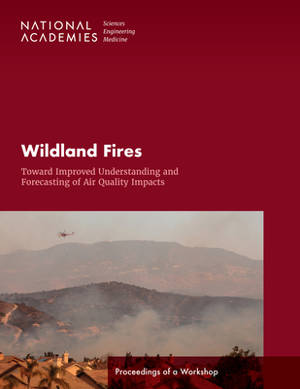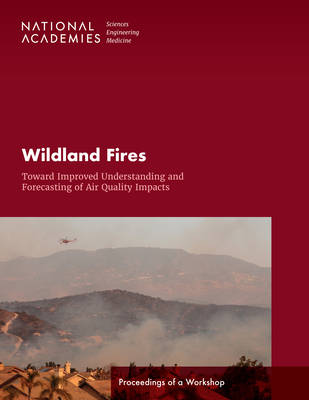
- Afhalen na 1 uur in een winkel met voorraad
- In januari gratis thuislevering in België
- Ruim aanbod met 7 miljoen producten
- Afhalen na 1 uur in een winkel met voorraad
- In januari gratis thuislevering in België
- Ruim aanbod met 7 miljoen producten
Wildland Fires: Toward Improved Understanding and Forecasting of Air Quality Impacts
Proceedings of a Workshop
National Academies of Sciences Engineering and Medicine, Division on Earth and Life Studies, Board on Chemical Sciences and Technology, Board on Atmospheric Sciences and ClimateOmschrijving
Wildland fires pose a growing threat to air quality and human health. Fire is a natural part of many landscapes, but the extent of area burned and the severity of fires have been increasing, concurrent with human movement into previously uninhabited fire-prone areas and forest management practices that have increased fuel loads. These changes heighten the risk of exposure to fire itself and emissions (smoke), which can travel thousands of miles and affect millions of people, creating local, regional, and national air quality and health concerns.
To address this growing threat, the National Academies brought together atmospheric chemistry and health research communities, natural resource managers, and decision makers to discuss current knowledge and needs surrounding how wildland fire emissions affect air quality and human health. Participants also explored opportunities to better bridge these communities to advance science and improve the production and exchange of information. This publication summarizes the workshop discussions and themes that emerged throughout the meeting.
Specificaties
Betrokkenen
- Auteur(s):
- Uitgeverij:
Inhoud
- Aantal bladzijden:
- 80
- Taal:
- Engels
Eigenschappen
- Productcode (EAN):
- 9780309277372
- Verschijningsdatum:
- 16/06/2022
- Uitvoering:
- Paperback
- Formaat:
- Trade paperback (VS)
- Afmetingen:
- 211 mm x 277 mm
- Gewicht:
- 204 g

Alleen bij Standaard Boekhandel
Beoordelingen
We publiceren alleen reviews die voldoen aan de voorwaarden voor reviews. Bekijk onze voorwaarden voor reviews.









